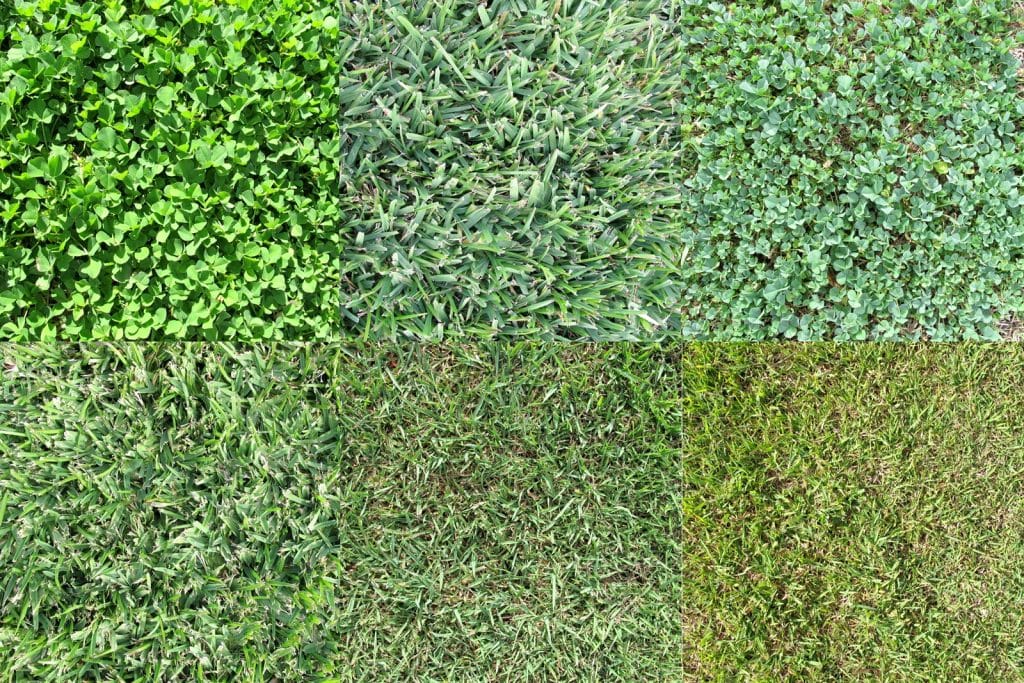Best Grass Types for Texas Weather: A Complete Guide for Homeowners
Maintaining a vibrant lawn in Texas isn’t about guesswork—it’s about understanding which grass types can thrive under the unique climate conditions. At Clearfork Lawn Care, we specialize in helping homeowners across Fort Worth and surrounding DFW cities select and install grass varieties that survive the Texas heat, adapt to soil types, and stay green longer. In this guide, we break down the most reliable grass types for North Texas weather based on expert insights, climate compatibility, and low-maintenance benefits.

Why Grass Selection Matters in Texas
Texas lawns face extreme conditions—soaring summer temperatures, clay-heavy soils, drought-prone stretches, and inconsistent rainfall. Choosing the wrong type of grass means more maintenance, water waste, patchy turf, and an unattractive yard.
The best grass types for Texas are drought-tolerant, resilient to wear, and well-suited to Texas soil profiles. Our team installs and maintains both natural and artificial turf solutions, ensuring your lawn is tailored for success.
6 Best Grass Types for Texas Weather
These six varieties consistently perform best across the Fort Worth area:
1. Bermuda Grass
Bermuda grass is ideal for sunny yards. It thrives in heat, establishes quickly, and tolerates foot traffic—making it great for families and pets.
- Sunlight needs: Full sun
- Drought tolerance: High
- Maintenance level: Moderate to high
- Ideal for: Residential and commercial lawns, athletic fields
2. St. Augustine Grass
St. Augustine grass thrives in humid conditions and handles partial shade better than Bermuda.
- Sunlight needs: Partial sun to full sun
- Drought tolerance: Moderate
- Maintenance level: High
- Ideal for: Residential lawns, shaded areas
3. Zoysia Grass
Zoysia grass is slow-growing but known for its dense, carpet-like look and high drought resistance.
- Sunlight needs: Full sun to partial shade
- Drought tolerance: High
- Maintenance level: Moderate
- Ideal for: Low-maintenance, upscale lawns
4. Buffalo Grass
Buffalo grass is a native prairie grass and one of the most drought-tolerant options available.
- Sunlight needs: Full sun
- Drought tolerance: Very high
- Maintenance level: Low
- Ideal for: Eco-conscious landscapes, large open spaces
5. Texas Bluegrass (Hybrid)
A newer hybrid, Texas Bluegrass mixes Kentucky Bluegrass with native Texas strains, offering better drought resistance and cold tolerance.
- Sunlight needs: Full sun to partial shade
- Drought tolerance: Moderate to high
- Maintenance level: Medium
- Ideal for: Mixed-sun lawns, transitional climates
6. Ryegrass (Temporary Cool Season)
Ryegrass is often used for seasonal overseeding in winter. It germinates quickly but doesn’t survive Texas summers.
- Sunlight needs: Full sun
- Drought tolerance: Low
- Maintenance level: High (only seasonal)
- Ideal for: Winter greening, temporary use
Best Grass Seed for Texas Heat
For intense summer months, Bermuda and Buffalo grass seeds outperform others. They germinate faster, establish deep root systems, and require less watering long-term. Bermuda seeds in particular are favored for sunny residential lawns and parks.
Best Sod for North Texas
When laying sod, we recommend:
- Bermuda sod for sun-drenched front yards
- St. Augustine sod for partial shade and lush green color
- Zoysia sod for a thick, weed-resistant look
Each offers instant curb appeal with less wait time than seeding.
Best Grass Seed for North Texas
Seed selection varies slightly across North Texas cities due to minor elevation and soil pH differences. Still, the following are consistent performers:
- Bermuda grass seed: Fast-germinating, heat-tolerant
- Zoysia seed: Dense, resilient turf for mixed sunlight
- Texas Bluegrass seed: Good for shaded areas and winter color
Our Clearfork Lawn Care experts can test your soil and recommend the best match.
Texas Bluegrass vs Bermuda: Key Differences
| Feature | Texas Bluegrass | Bermuda Grass |
| Sunlight Tolerance | Partial shade to full sun | Requires full sun |
| Drought Resistance | Moderate | High |
| Maintenance | Moderate | High |
| Growth Type | Cool-season hybrid | Warm-season native |
| Use Cases | Shaded lawns, cool-weather lawns | Sports fields, sunny home yards |
Maintenance Tips for Texas Lawns
Once your lawn is installed, keeping it green through Texas seasons takes the right approach:
- Water deeply, not daily: 1 inch per week in the early morning promotes deep root growth.
- Mow high during summer: Taller blades offer shade to roots and preserve moisture.
- Aerate in spring and fall: Loosens compacted clay soil for better water and nutrient absorption.
- Fertilize at the right time: Warm-season grasses benefit from feeding in early summer.
Our team offers ongoing lawn care and fertilization services customized for Fort Worth’s climate.
Artificial Turf: A Year-Round Green Option
Looking for a zero-maintenance, evergreen lawn? Artificial turf has gained popularity in Texas thanks to its:
- No mowing, watering, or fertilizing
- Consistent curb appeal
- Long lifespan with minimal upkeep
Clearfork Lawn Care installs premium turf solutions that look and feel like real grass. Great for pet owners and families.
Which Grass Is Right for Your Property?
Choosing between Bermuda, St. Augustine, Zoysia, and others depends on:
- Sunlight exposure
- Water availability
- Foot traffic
- Aesthetic preferences
- Budget and time to establish
We’ll walk your property and recommend the best grass type or turf solution tailored to your goals.
Call Clearfork Lawn Care for Expert Grass Solutions in Fort Worth
At Clearfork Lawn Care, we understand what works for Texas weather because we live and work here. Our team offers complete landscape design, lawn care, and artificial turf installation for homes and businesses in Fort Worth and surrounding cities. Whether you’re reseeding your lawn, laying new sod, or switching to artificial turf, we’re here to help your landscape thrive.
Call 817-705-9352 today for a consultation and transform your yard with the best grass for Texas.
